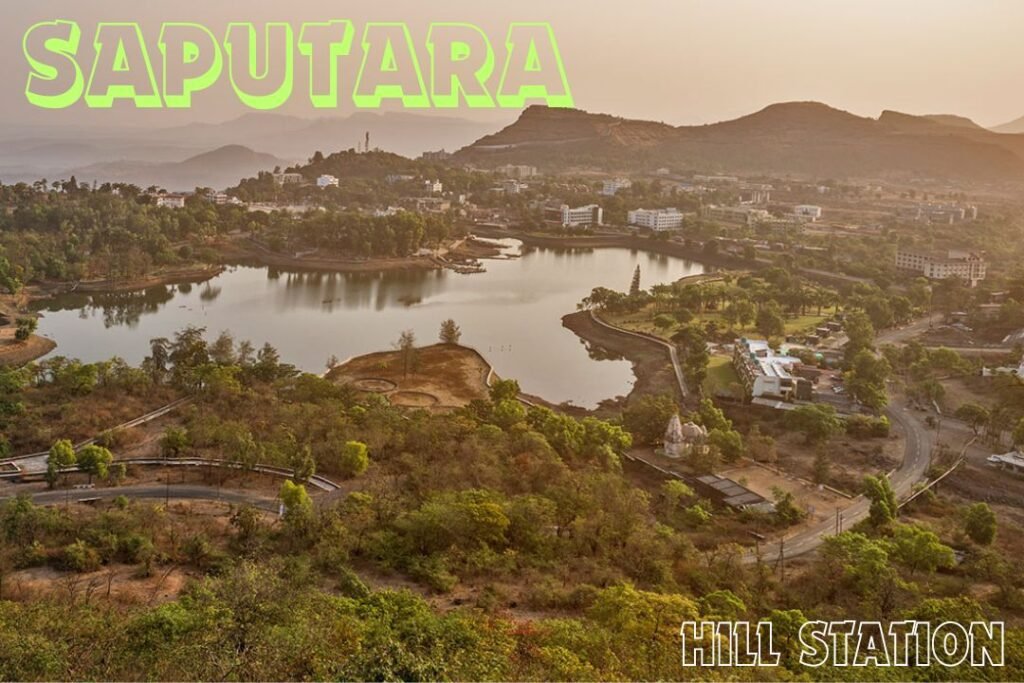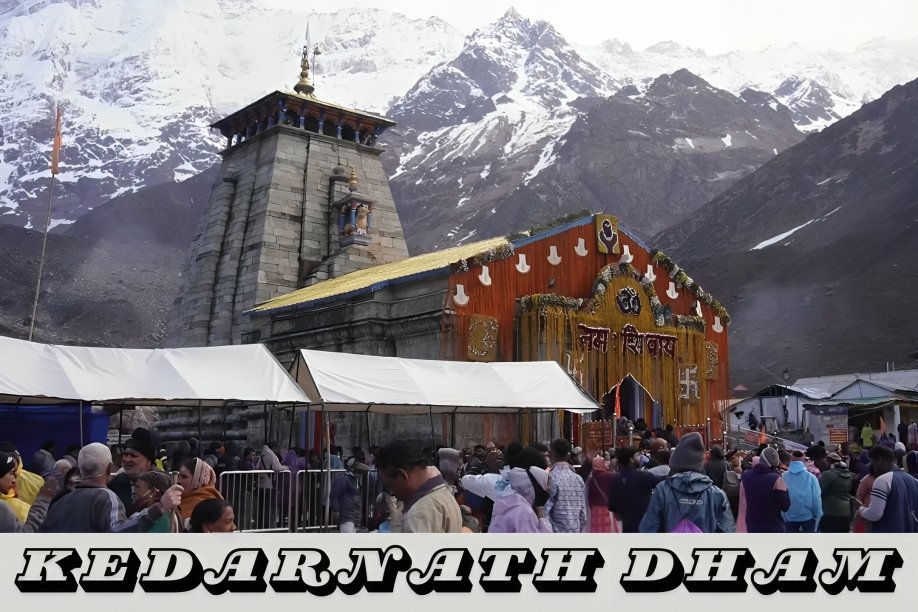Bhimashankar Jyotirlinga, one of the twelve Jyotirlingas revered in Hinduism, is a potent symbol of spirituality and nature’s magnificence. Located in the Sahyadri hills of Maharashtra, this sacred site draws devotees and nature enthusiasts alike. For travelers, Bhimashankar Jyotirlinga offers a profound spiritual experience intertwined with the serenity of nature.
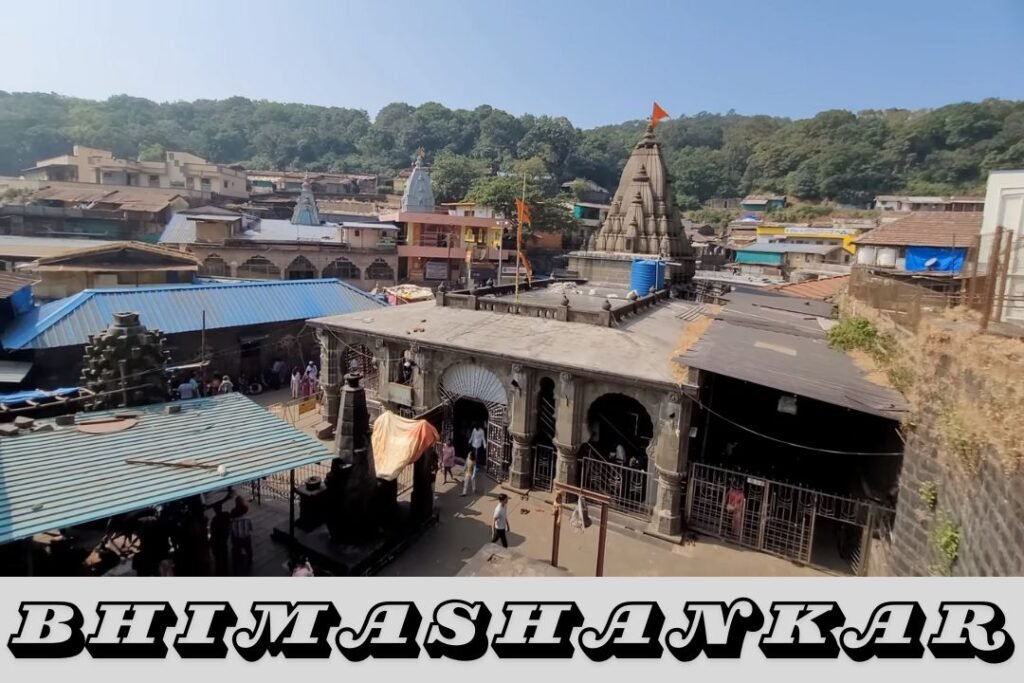
Table of Contents
Key Points
Historical Significance
Bhimashankar Jyotirlinga is entrenched in deep historical and mythological roots. According to Hindu lore, Lord Shiva took the form of a Jyotirlinga here to vanquish the demon Tripurasura, thereby protecting the universe from his tyranny. This divine act is said to have bestowed the site with immense spiritual energy.
The temple’s construction dates back to the 13th century, reflecting the Hemadpanthi architectural style. This style, named after the prime minister Hemadpant of the Yadava Dynasty, is characterized by the use of black basalt rock and intricate carvings. The temple’s architecture showcases a blend of North Indian (Nagara) and South Indian (Dravidian) styles, with a towering shikhara (spire) and a sanctum sanctorum housing the Jyotirlinga. The walls and pillars are adorned with detailed carvings depicting scenes from Hindu mythology and various deities, exemplifying ancient Indian craftsmanship.
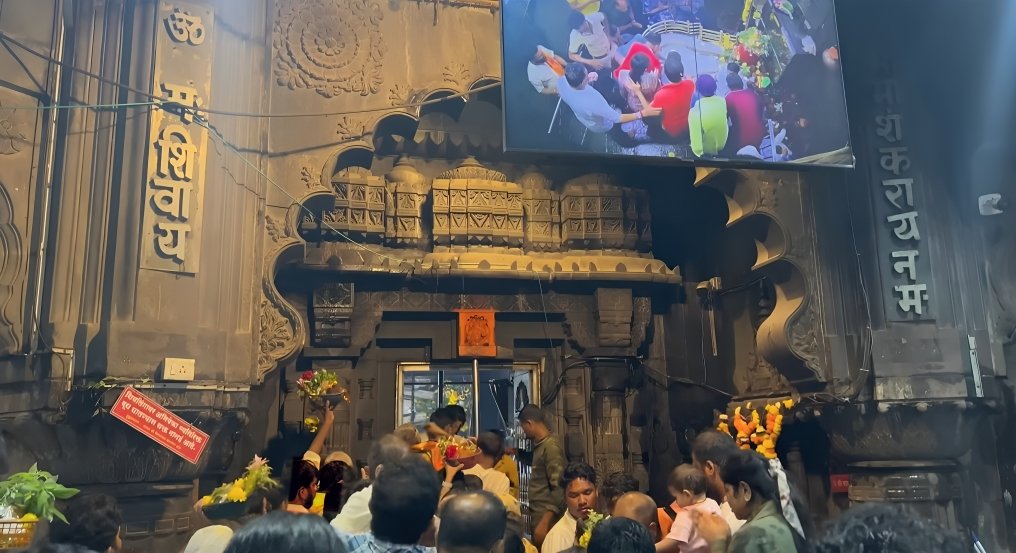

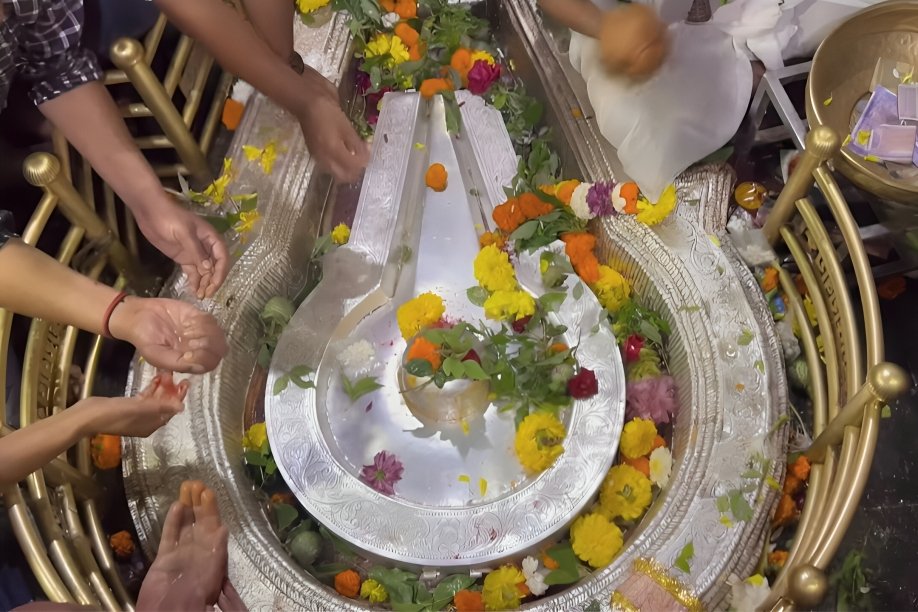



Spiritual Importance
The spiritual aura of Bhimashankar Jyotirlinga is unparalleled. As one of the twelve Jyotirlingas, it holds a significant place in the hearts of Shiva devotees. The temple is believed to be a powerful site for spiritual cleansing and attaining moksha (liberation from the cycle of rebirth). Pilgrims from across the country visit to offer their prayers, seeking blessings and spiritual rejuvenation.
The temple complex includes smaller shrines dedicated to various deities, enhancing the spiritual experience. The primary deity, Lord Shiva, is worshipped in his form as Bhimashankar, with elaborate rituals and offerings. The temple priests perform daily aartis (rituals of worship) and special pujas (prayers) during festivals, creating an atmosphere charged with devotion and spirituality.
Scenic Beauty
Bhimashankar is set amidst the lush greenery of the Sahyadri hills, offering a picturesque and serene environment. The area is rich in biodiversity, with dense forests, rolling hills, and pristine rivers. This natural beauty is complemented by the Bhimashankar Wildlife Sanctuary, which spans over 130 square km. The sanctuary is home to a variety of flora and fauna, including the endangered Indian Giant Squirrel (Ratufa indica elphistoni), which is the state animal of Maharashtra.
The sanctuary offers several trekking trails that allow visitors to explore the natural beauty of the region. These trails range from easy walks to more challenging hikes, providing opportunities to witness the diverse wildlife and scenic vistas. The monsoon season transforms the landscape into a lush green haven, with numerous waterfalls adding to the beauty. The serene ambiance of Bhimashankar makes it an ideal retreat for nature lovers and those seeking tranquility.
Surrounding Attractions of Bhimashankar Jyotirlinga
Gupt Bhimashankar
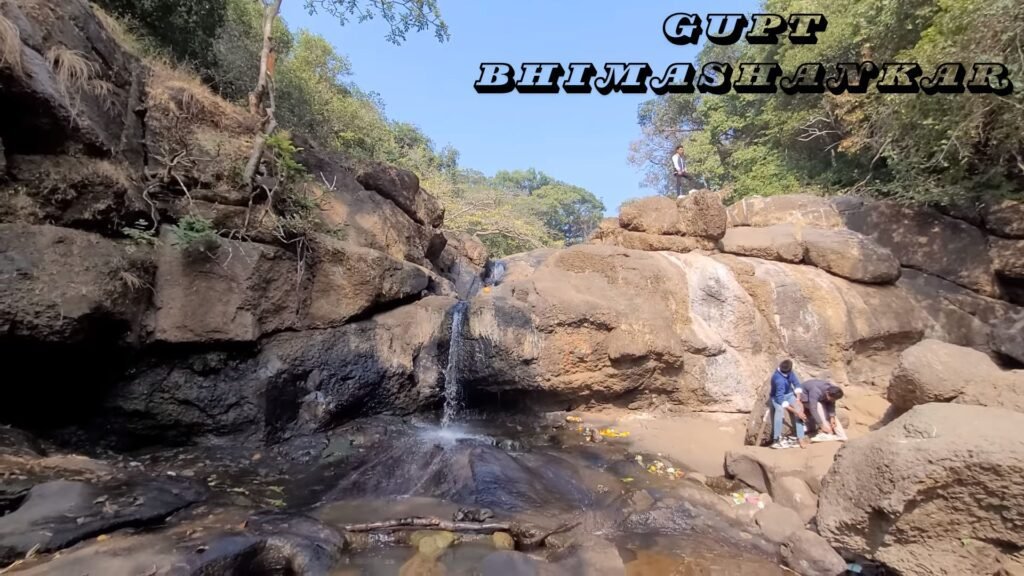

Hidden Shrine: Gupt Bhimashankar is an ancient and hidden shrine located deep within the dense forests near Bhimashankar temple. It is considered highly sacred and is believed to be the original Jyotirlinga.
Adventure Trek: Reaching Gupt Bhimashankar involves a short trek through the forest, offering a sense of adventure along with spirituality. The trek is approximately 3-4 km and passes through scenic landscapes.
Serene Environment: The area around Gupt Bhimashankar is peaceful and less crowded compared to the main temple, providing a serene and meditative atmosphere for devotees.
Natural Surroundings: The trail to Gupt Bhimashankar is surrounded by lush greenery, streams, and waterfalls, especially during the monsoon season, making it a picturesque journey.
Pilgrimage Significance: Pilgrims believe that visiting both the main Bhimashankar Jyotirlinga and Gupt Bhimashankar enhances the spiritual experience and blessings received from Lord Shiva.
Hanuman Lake
Scenic Beauty: Hanuman Lake is a serene and picturesque lake near the Bhimashankar temple, surrounded by lush greenery and offering tranquil views.
Recreational Spot: The lake is a popular spot for relaxation and picnics among visitors and locals. It provides a peaceful environment to unwind and enjoy nature.
Bird Watching: The lake area attracts various bird species, making it an ideal spot for bird watching. Visitors can spot different migratory and resident birds.
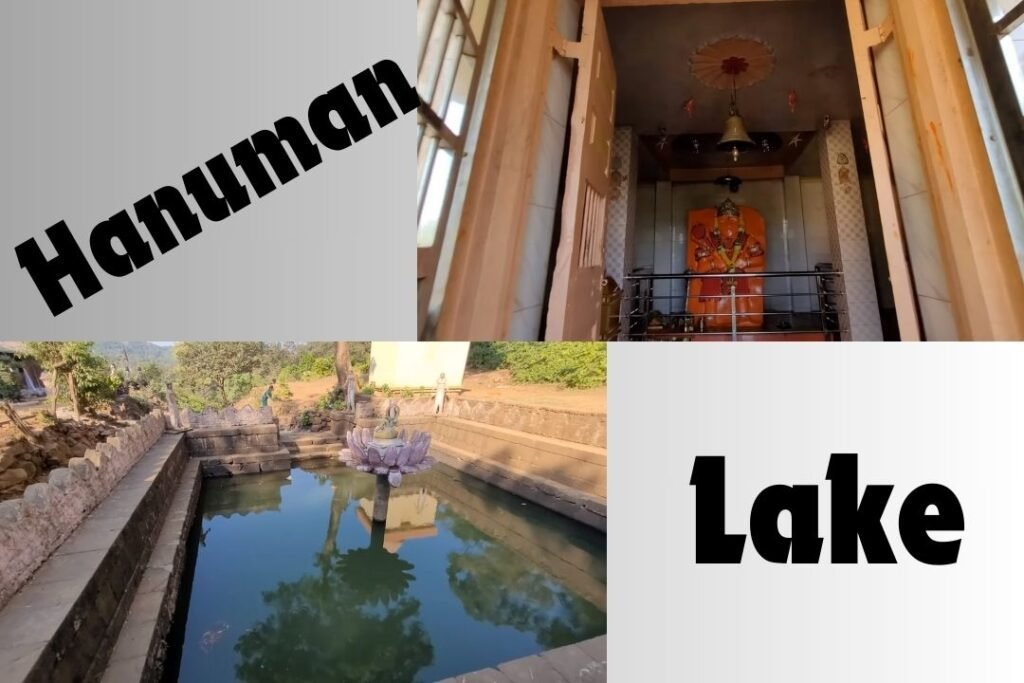

Mythological Connection: The lake is named after Lord Hanuman and is believed to have mythological significance. Local legends often associate it with the tales of Ramayana.
Photography: The serene surroundings and clear waters of Hanuman Lake provide excellent opportunities for photography, especially during sunrise and sunset.
Nag Phani (Serpent’s Hood)
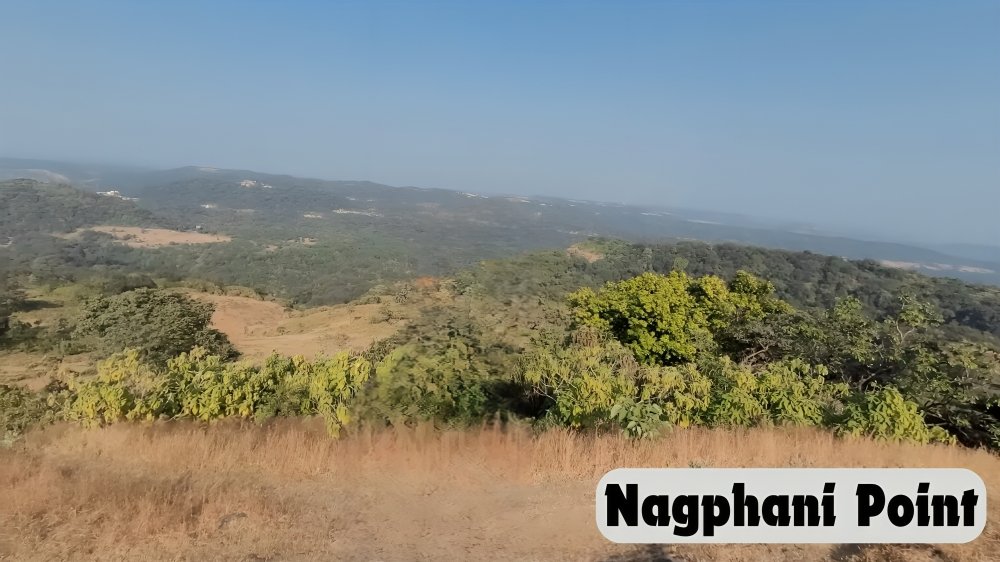

Unique Formation: Nag Phani, also known as Serpent’s Hood, is a rock formation resembling a serpent’s hood, located near Bhimashankar. This natural formation adds a mystical charm to the area.
Trekking Destination: It is a popular trekking destination for adventure enthusiasts. The trek to Nag Phani offers breathtaking views of the surrounding valleys and mountains.
Panoramic Views: From the top of Nag Phani, visitors can enjoy panoramic views of the Sahyadri ranges and the dense forests below. The view is especially mesmerizing during the monsoon season.
Mythological Significance: The place is associated with local myths and legends, often believed to be the meditative spot for sages and ascetics in ancient times.
Flora and Fauna: The trail to Nag Phani passes through diverse flora and fauna, offering opportunities to observe the rich biodiversity of the region.
Mahadev Van
Sacred Grove: Mahadev Van, or the Forest of Lord Shiva, is a sacred grove located near Bhimashankar temple. It is considered a holy place where devotees seek blessings and peace.
Lush Vegetation: The forest is dense with lush vegetation, providing a cool and tranquil environment. It is home to various plant species, some of which have medicinal properties.
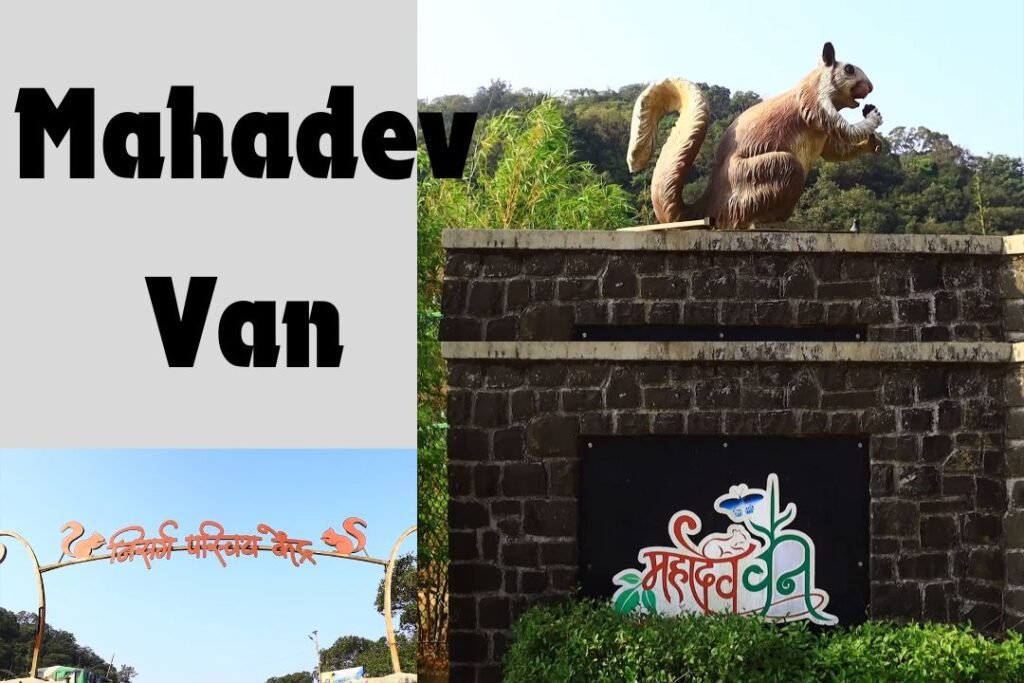

Biodiversity: Mahadev Van is rich in biodiversity, hosting numerous species of birds, insects, and small mammals. It is an excellent spot for nature lovers and wildlife enthusiasts.
Meditative Spot: The serene environment of Mahadev Van makes it an ideal spot for meditation and spiritual practices. Many visitors come here to connect with nature and find inner peace.
Conservation Area: The forest is a protected area, with efforts made to conserve its natural beauty and ecological balance. Visitors are encouraged to respect the environment and maintain its cleanliness.
Bombay Point
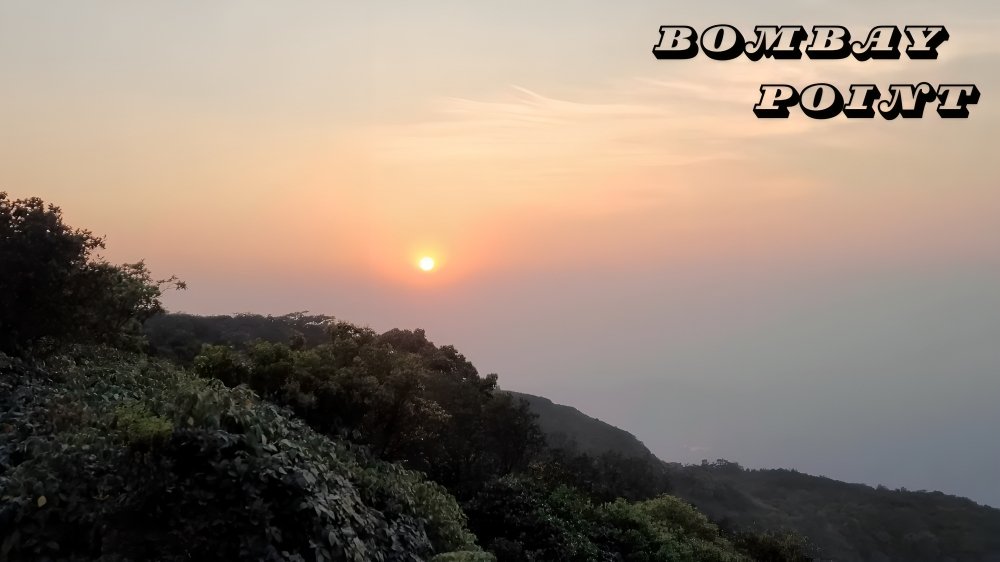

Sunrise and Sunset: Bombay Point is known for its breathtaking sunrise and sunset views. The changing colors of the sky during these times create a mesmerizing experience.
Picnic Spot: The area around Bombay Point is a favored picnic spot, where visitors can relax, enjoy the view, and spend quality time with family and friends.
Trekking Access: It can be accessed via a trekking trail that offers an adventurous experience. The trail is surrounded by lush forests and provides a great opportunity to explore the natural beauty of Bhimashankar.
Viewpoint: Bombay Point is a popular viewpoint near Bhimashankar, offering spectacular views of the surrounding landscape. It is a must-visit spot for nature lovers and photographers.
Historical Significance: The point is believed to be named during the British era, providing a vantage point from which the city of Mumbai (formerly Bombay) could be viewed on clear days.
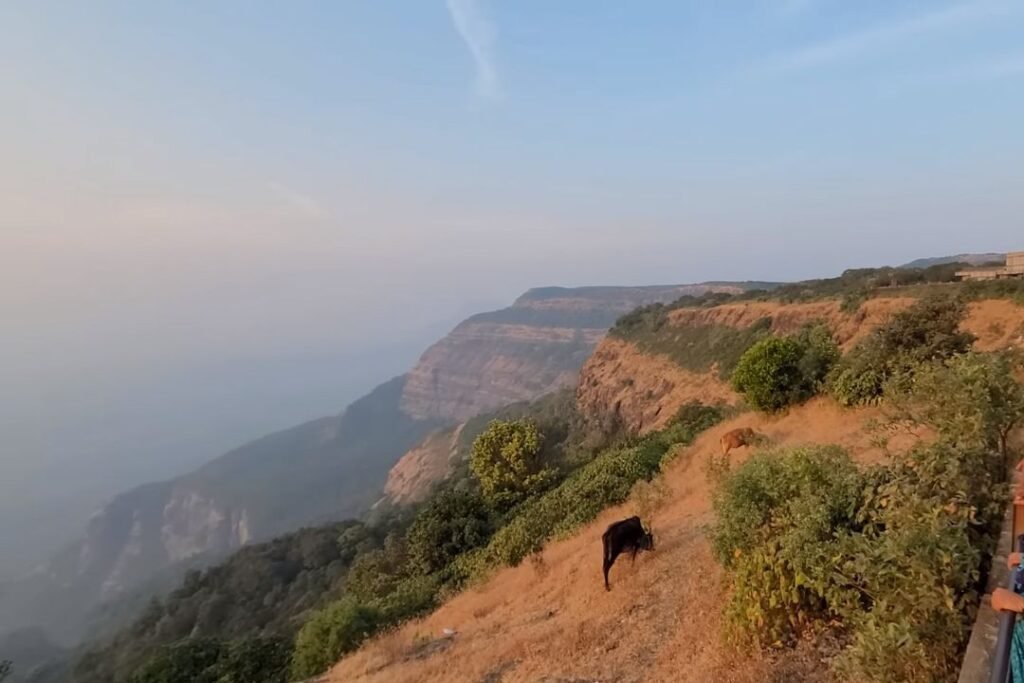

Bhima River Origin
Sacred Source: The Bhima River originates near the Bhimashankar temple. It is considered sacred and holds significant religious importance for the locals and pilgrims.
Mythological Significance: According to Hindu mythology, the river is named after Bhima, one of the Pandavas from the Mahabharata. The river’s origin is believed to be blessed by Lord Shiva.
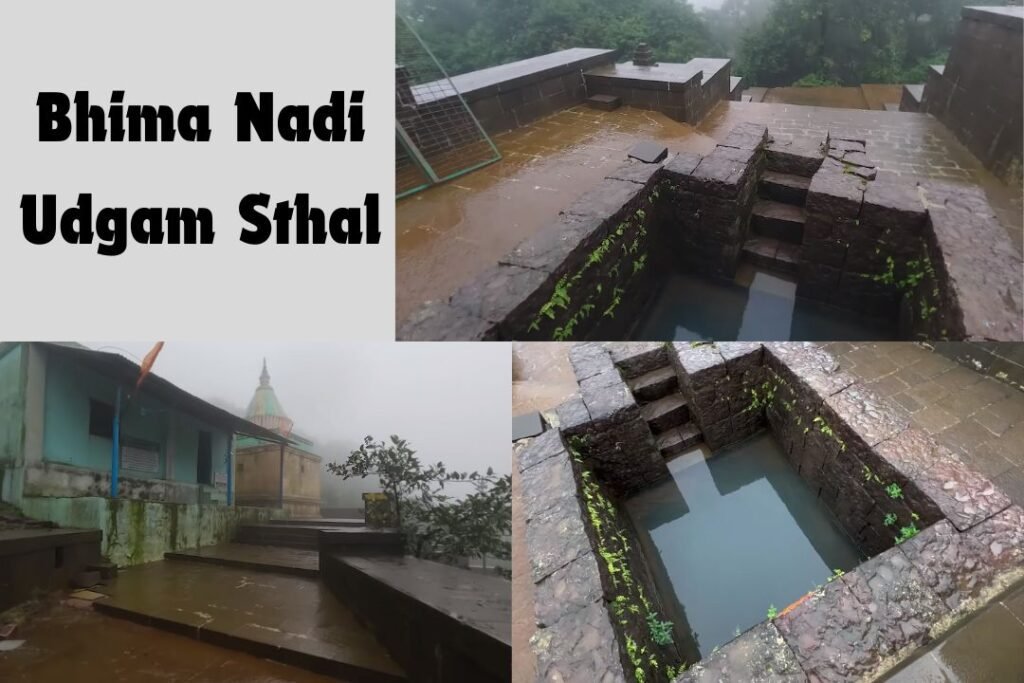

Natural Beauty: The source of the Bhima River is surrounded by natural beauty, with clear, flowing water and lush green surroundings.
Waterfalls: The river’s origin point leads to several small waterfalls, especially during the monsoon season, adding to the scenic charm of the area.
Pilgrimage Site: Devotees often visit the origin of the Bhima River to perform rituals and take a holy dip, believing it to purify their souls and bring them closer to divinity.
Borgad
Scenic Village: Borgad is a scenic village near Bhimashankar, known for its picturesque landscapes and serene environment. It is a perfect spot for nature lovers and those seeking tranquility.
Trekking Trails: The village serves as a starting point for several trekking trails that lead to the surrounding hills and forests. These trails offer adventure and stunning views.
Local Wildlife: Borgad is rich in biodiversity, with opportunities to spot various species of birds, insects, and small mammals. It is an excellent destination for wildlife enthusiasts.
Cultural Heritage: The village maintains its cultural heritage with traditional festivals, rituals, and local art forms. Visitors can connect with the local community and learn about their customs.
Eco-Tourism: Borgad promotes eco-tourism, encouraging sustainable practices and conservation of natural resources. Visitors are invited to participate in eco-friendly activities and support local initiatives.
Bhorgiri
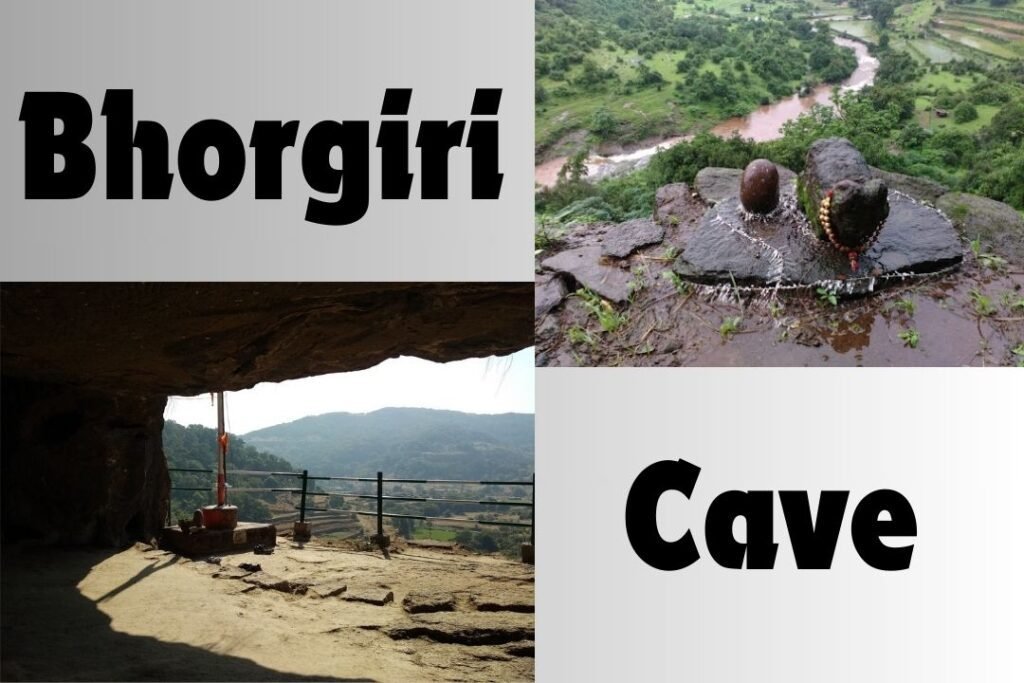

Historical Caves: Bhorgiri is known for its ancient caves, which date back to the 1st century AD. These rock-cut caves served as Buddhist monasteries and are of great historical and archaeological significance.
Trekking Destination: Bhorgiri is a popular trekking destination, with trails leading to the caves and offering panoramic views of the surrounding landscape. The trek is moderately challenging and suitable for adventure enthusiasts.
Scenic Beauty: The village is surrounded by lush green hills, waterfalls, and streams, providing a tranquil and scenic environment for visitors.
Cultural Heritage: Bhorgiri retains its cultural heritage, with local festivals, traditional music, and dance performances that reflect the region’s rich history and traditions.
Agricultural Practices: The village is primarily agrarian, with traditional farming practices. Visitors can learn about the cultivation of local crops and participate in agricultural activities.
Bhimashankar Wildlife Sanctuary
Biodiversity Hotspot: Bhimashankar Wildlife Sanctuary is a biodiversity hotspot, home to a wide variety of flora and fauna, including the endangered Indian Giant Squirrel, leopards, deer, and numerous bird species.
Trekking Trails: The sanctuary offers several trekking trails of varying difficulty levels, allowing visitors to explore the dense forests, waterfalls, and scenic viewpoints.
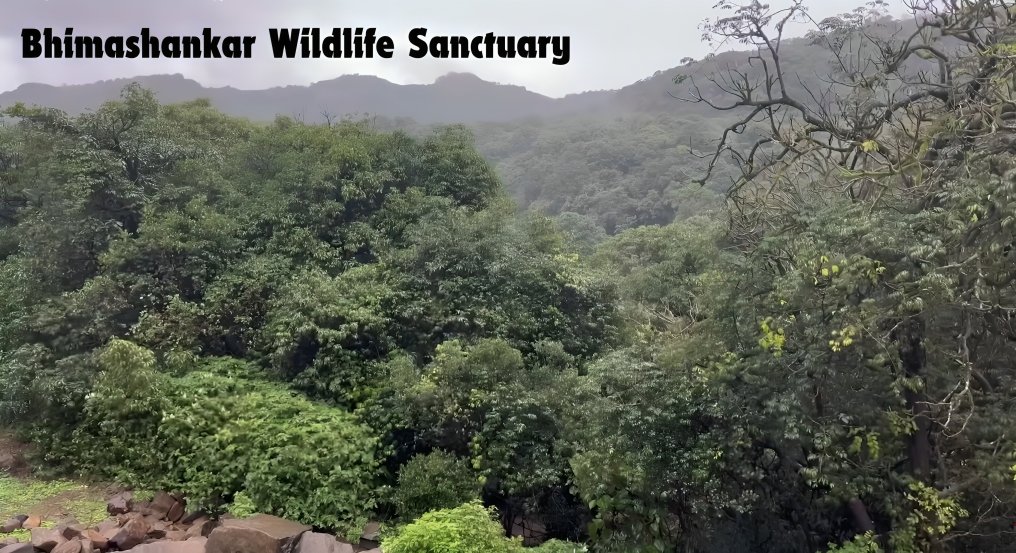

Conservation Area: The sanctuary is a protected area aimed at conserving the rich biodiversity and natural resources of the region. It plays a crucial role in the preservation of the Western Ghats’ ecosystem.
Wildlife Observation: Visitors can engage in wildlife observation and bird watching, with opportunities to spot rare and endemic species in their natural habitat.
Eco-Tourism Initiatives: Bhimashankar Wildlife Sanctuary promotes eco-tourism, encouraging sustainable tourism practices that minimize environmental impact and support local communities. Visitors are educated about conservation efforts and the importance of preserving the natural environment.
How to Reach
Reaching Bhimashankar is convenient due to its well-connected roadways and proximity to major cities in Maharashtra. Here are the details on how to reach Bhimashankar by various modes of transportation:
By Air
Nearest Airport: The nearest airport to Bhimashankar is Pune International Airport (PNQ), which is approximately 110 km away.
From the Airport: From Pune Airport, you can hire a taxi or take a bus to Bhimashankar. Pre-paid taxi services are available at the airport, providing a direct and comfortable ride to Bhimashankar.
Flight Connectivity: Pune Airport is well-connected to major cities across India, including Mumbai, Delhi, Bangalore, Chennai, and Hyderabad, with frequent domestic flights.
By Train
Nearest Railway Station: The nearest major railway station is Pune Railway Station, located about 110 km from Bhimashankar.
Train Connectivity: Pune Railway Station is a major junction and is well-connected to various parts of India, including Mumbai, Delhi, Bangalore, Chennai, and Hyderabad.
From the Railway Station: From Pune Railway Station, you can hire a taxi, take a bus, or use shared cab services to reach Bhimashankar. Regular state transport buses (MSRTC) and private buses operate between Pune and Bhimashankar.
By Road
From Pune: Bhimashankar is approximately 110 km from Pune and is well-connected by road. The journey by car or bus takes about 3 to 4 hours.
- Route: Pune → Rajgurunagar (Khed) → Manchar → Ghodegaon → Bhimashankar.
From Mumbai: Bhimashankar is approximately 210 km from Mumbai. The road journey takes about 5 to 6 hours.
- Route: Mumbai → Navi Mumbai → Panvel → Khopoli → Chakan → Manchar → Ghodegaon → Bhimashankar.
State Transport Buses: Maharashtra State Road Transport Corporation (MSRTC) operates regular buses from Pune and Mumbai to Bhimashankar. These buses are economical and provide a convenient mode of travel.
Private Vehicles: Private taxis and car rental services are available from Pune and Mumbai, offering a comfortable and flexible travel option to Bhimashankar.
Local transportion
Once in Bhimashankar, local transport options like auto-rickshaws and taxis are available to explore nearby attractions. But to visit the places inside the forest you will have to walk.
Accommodations
Budget Accommodation
- MTDC Bhimashankar Resort: Near Bhimashankar Temple
- Guesthouses and Lodges: Several budget guesthouses and lodges are available near the temple area.
Mid-Range Accommodation
- Bhimashankar Wildlife Resort: Bhimashankar Wildlife Sanctuary
- Private Resorts and Cottages: There are private resorts and cottages offering mid-range accommodation options.
Luxury Accommodation
- Manas Resort: Bhimashankar Hills, near the temple
- Forest Escapes Resort: Bhimashankar Wildlife Sanctuary
Homestays and Eco-friendly Stays
- Local Homestays: Various locals offer homestay accommodations with authentic hospitality and homemade meals.


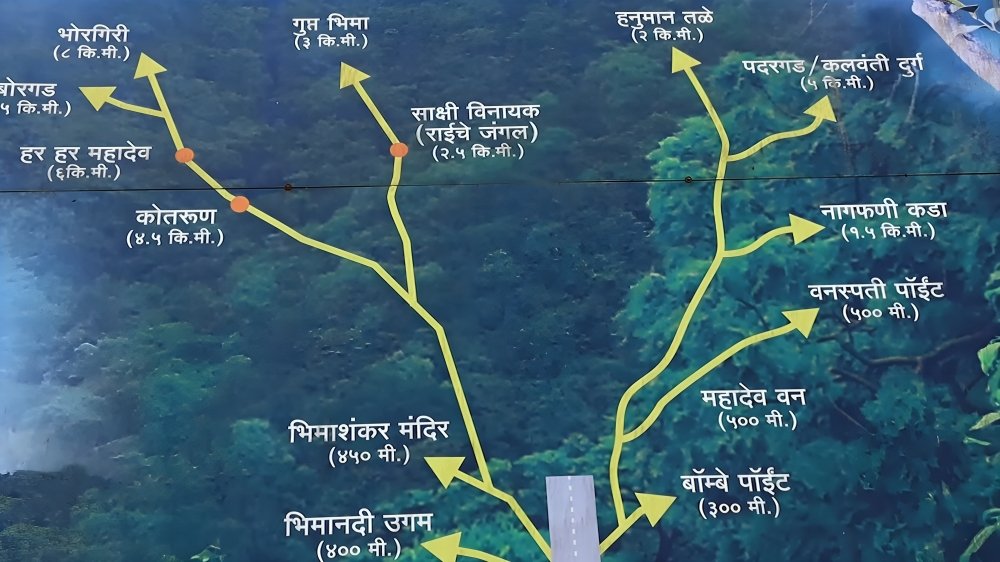

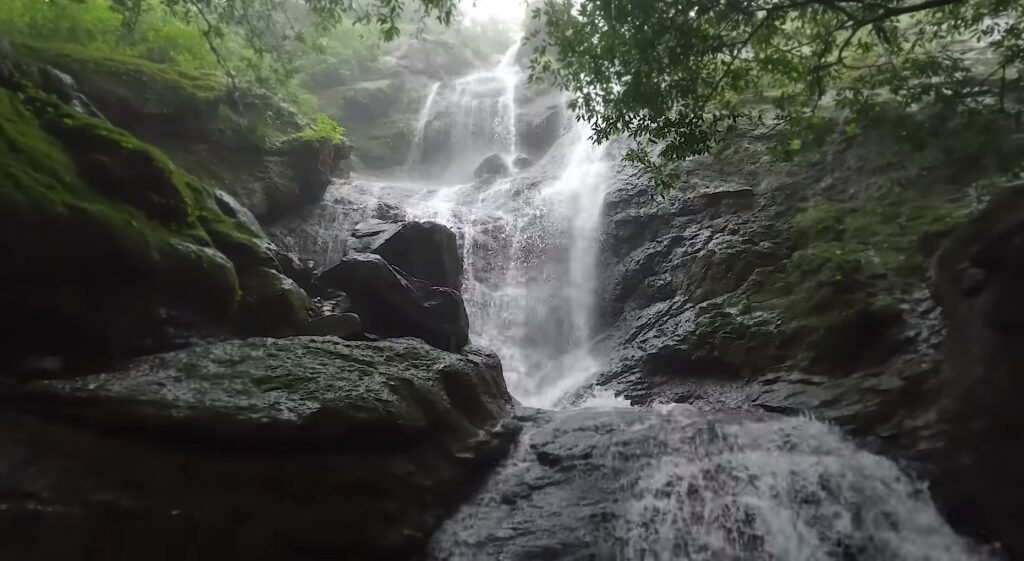

Local Cuisine around Bhimashankar
Maharashtrian Thali: A traditional Maharashtrian meal served on a thali (plate) typically includes various dishes such as rice, roti (flatbread), dal (lentil curry), sabzi (vegetable curry), koshimbir (salad), papad, pickle, and a sweet dish like puran poli or shrikhand.
Misal Pav: A popular Maharashtrian breakfast or snack, misal pav consists of sprouted moth beans cooked in a spicy gravy, topped with farsan (crunchy mix), onions, tomatoes, and coriander. It is served with pav (bread).
Pithla Bhakri: Pithla is a gram flour-based curry flavored with spices, onions, and garlic, often served with bhakri (thick flatbread made from jowar or bajra flour). It is a staple dish in rural Maharashtra.
Vada Pav: Known as the “Indian burger,” vada pav consists of a spicy potato fritter (vada) sandwiched between pav (soft bread roll) along with chutneys and fried green chili.
Sabudana Khichdi: A fasting dish made from soaked sabudana (tapioca pearls), peanuts, potatoes, and flavored with cumin seeds, green chilies, and curry leaves. It’s popular during religious fasting days.
Modak: A sweet dumpling filled with grated coconut, jaggery, and flavored with cardamom. It is a traditional Maharashtrian sweet offered to Lord Ganesha during festivals like Ganesh Chaturthi.
Bhakarwadi: A crispy and spicy snack made from gram flour dough rolled into spirals, filled with a mixture of spices, coconut, and sesame seeds, then deep-fried until golden brown.
Sol Kadhi: A refreshing drink made from kokum (a sour fruit native to the Konkan region), coconut milk, and seasoned with garlic, green chilies, and coriander leaves. It aids digestion and is served as a digestive after meals.
Travel tips and Safety advice
Best Time to Visit: The ideal time to visit Bhimashankar is during the cooler months from October to February, when the weather is pleasant for sightseeing and trekking.
Accommodation Booking: Especially during peak seasons and festivals like Mahashivratri, it’s advisable to book your accommodation in advance to avoid last-minute hassles.
Clothing: Pack light cotton clothes for summers and warm layers for winters, as the weather can vary. Comfortable footwear is essential, especially if you plan to trek around the temple or nearby trails.
Photography: Capture the scenic beauty and cultural richness of Bhimashankar but respect local customs regarding photography in religious sites and seek permission for portraits of locals to ensure a respectful and enjoyable experience.
Local Customs: Respect local customs and traditions, especially in religious places like Bhimashankar temple. Dress modestly and maintain decorum while visiting temples and other sacred sites.
Cash Availability: Carry sufficient cash, as ATM facilities may be limited in remote areas. It’s also advisable to keep smaller denominations for local purchases and tips.
Local Cuisine: Enjoy local Maharashtrian cuisine, but be mindful of hygiene standards. Opt for freshly prepared meals and bottled water to avoid any digestive issues.
Transportation: If traveling by public transport, check the schedules in advance. Private taxis or rented vehicles provide more flexibility for exploring nearby attractions.
Health Precautions: Pack basic medicines and a first aid kit. If you have any specific health conditions, inform your travel companions and carry necessary medications.
Weather Awareness: Be aware of the weather conditions, especially during monsoon season (June to September), when roads can be slippery and trekking trails may be challenging.
Wildlife Encounters: Bhimashankar Wildlife Sanctuary is home to diverse flora and fauna, including some wildlife. Respect their habitat, maintain a safe distance, and avoid feeding or disturbing animals.
Trekking Safety: If trekking, hire a local guide who is familiar with the trails and terrain. Wear appropriate footwear, carry water and snacks, and inform someone about your trekking plans.
Temple Visits: Follow temple guidelines and instructions. Respect the sanctity of the place and avoid any actions that may disrupt religious practices or sentiments.
Travel Insurance: Buy travel insurance that also covers medical emergencies, trip cancellations and other unforeseen circumstances.
Environmental Protection: Enjoy and respect the natural environment and do not litter. Dispose of waste responsibly and contribute to maintaining the cleanliness of Bhimashankar and its surroundings.
Conclusion
Bhimashankar Jyotirlinga offers an enriching experience that beautifully intertwines spirituality, history, and nature. For travelers, this pilgrimage is not just a journey to seek divine blessings but also an opportunity to immerse in the tranquility of the Sahyadri hills. Whether you are seeking spiritual solace, historical insights, or natural beauty, Bhimashankar Jyotirlinga promises an unforgettable experience.
So plan your visit with Gujju Traveling’s blog and embark on a journey that will rejuvenate you spiritually and connect with nature.


Frequently Asked Questions (FAQs)
Where is Bhimashankar located?
Bhimashankar is located in the Sahyadri range of Maharashtra, India. It is situated in the Ghat region of Pune district.
What is Bhimashankar famous for?
Bhimashankar is famous for the Bhimashankar Temple, one of the 12 Jyotirlingas dedicated to Lord Shiva. It is also known for its Bhimashankar Wildlife Sanctuary.
How can I reach Bhimashankar from Pune?
You can reach Bhimashankar from Pune by road via Manchar. It’s approximately 110 km and takes about 3 to 4 hours by car or bus.
What is the best time to visit Bhimashankar?
The best time to visit Bhimashankar is during the cooler months from October to February when the weather is pleasant for sightseeing and trekking.
Is Bhimashankar safe for tourists?
Yes, Bhimashankar is generally safe for tourists. However, it’s advisable to take usual precautions regarding personal safety and health, especially during outdoor activities.
What are the trekking options near Bhimashankar?
Popular trekking options near Bhimashankar include trails to Gupt Bhimashankar, Hanuman Lake, and within the Bhimashankar Wildlife Sanctuary.
Is there accommodation available in Bhimashankar?
Yes, Bhimashankar offers a range of accommodation options including budget lodges, mid-range resorts, and luxury hotels. Advance booking is recommended during peak season.
What are the nearby attractions apart from the temple?
Apart from the Bhimashankar Temple, visitors can explore Gupt Bhimashankar, Hanuman Lake, Nag Phani (Serpent’s Hood), Bombay Point and the Bhimashankar Wildlife Sanctuary.
Are there any festivals celebrated in Bhimashankar?
Yes, Mahashivratri is the major festival celebrated with great enthusiasm at Bhimashankar. It includes a large number of devotees.
Can photography be done inside Bhimashankar Temple?
Photography rules inside the Bhimashankar Temple may vary. It’s advisable to seek permission from authorities and respect any restrictions, especially during puja times.
What are the timings of Bhimashankar Temple?
The Bhimashankar Temple usually opens early in the morning and closes in the evening. Exact timings may vary, so it’s recommended to check locally or with the temple authorities.
Is there any wildlife sanctuary near Bhimashankar?
Yes, the Bhimashankar Wildlife Sanctuary is nearby, known for its rich biodiversity including the Indian Giant Squirrel and various bird species.
Are there any restaurants or eateries in Bhimashankar?
Yes, Bhimashankar has local eateries and restaurants offering Maharashtrian cuisine and snacks. Some accommodations also have in-house dining options.
Can I visit Bhimashankar for a day trip from Pune or Mumbai?
Yes, Bhimashankar can be visited as a day trip from Pune or Mumbai. However, to explore all attractions and enjoy the trekking trails, an overnight stay is recommended.

